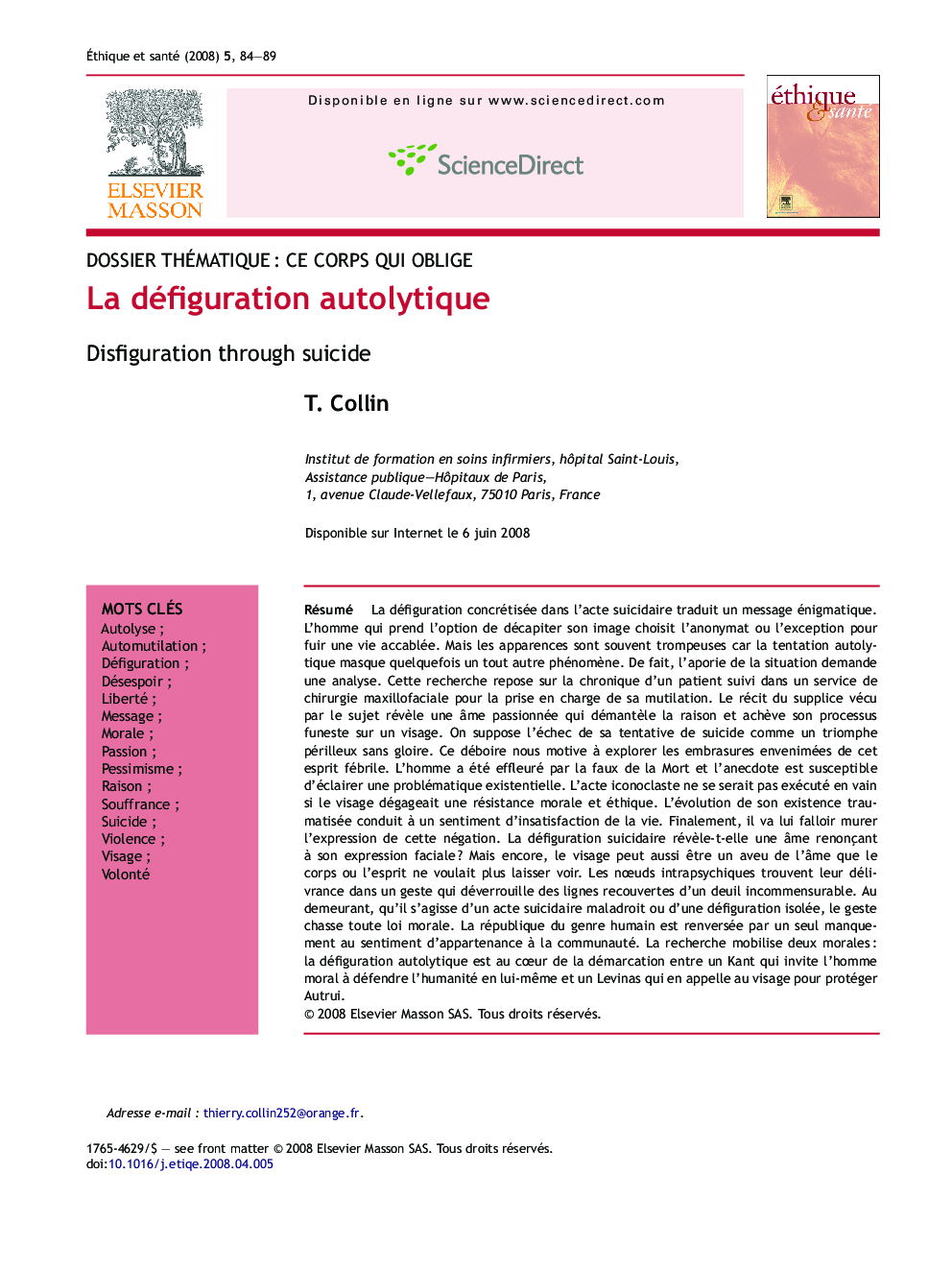| کد مقاله | کد نشریه | سال انتشار | مقاله انگلیسی | نسخه تمام متن |
|---|---|---|---|---|
| 1072126 | 949684 | 2008 | 6 صفحه PDF | دانلود رایگان |
عنوان انگلیسی مقاله ISI
La défiguration autolytique
دانلود مقاله + سفارش ترجمه
دانلود مقاله ISI انگلیسی
رایگان برای ایرانیان
کلمات کلیدی
RaisonAutolysisLiberty - آزادیFreedom - آزادیwill - ارادهLiberté - ازادیPessimism - بدبینیDisfigurement - خرابیViolence - خشونتAutomutilation - خود زنیSelf-mutilation - خودکشیSuicide - خودکشی، خودکشی کردن، انتحارReason - دلیلSuffering - رنج کشیدنmorale - روحیهPassion - شورFace - صورتEthics - فلسفه اخلاقSouffrance - مبتلاDespair - ناامیدیMessage - پیامVisage - چهره
موضوعات مرتبط
علوم پزشکی و سلامت
پزشکی و دندانپزشکی
سیاست های بهداشت و سلامت عمومی
پیش نمایش صفحه اول مقاله

چکیده انگلیسی
Disfiguration through the act of suicide conveys an enigmatic message. A man who decides to behead his own image chooses anonymity or exception to escape his devasting life. Appearances are deceptive because an autolytic temptation sometimes conceals a quite different analysis. This study investigates the story of a patient whose self-inflicted mutilation was treated in a department specialized in maxillaryfacial surgery. The history of the torment suffered by the patient reveals in him a furor-stricken soul that dismantles reasons and completes the deathly process on the face. The failure of the attempted suicide can be assumed to be an empty triumph. This attempted suicide case explores the depths of the patient's troubled mind in a man who came close to the scythe of death, bringing to light an existential problem. This iconoclastic action would not have been executed in vain if his face expressed moral and ethical resistance, but instead his traumatized life has led to a sense of dissatisfaction for life itself. In the end, he will have to wall off the expression of this denial. Does suicide through disfiguration reveal a soul renouncing its facial expression? Then again, the face may well be a confession of the soul that the body and mind do not want to disclose. The intrapsychic bonds find deliverance in a movement that releases the lines entangled in an inconsolable affliction. Otherwise, whether it be an inelegant suicide act or an isolated disfiguration, his action dismisses any moral law. The republic of mankind is astounded by a single violation of the sense of belonging to the community. Research mobilizes two moral ethics: suicide through disfiguration lies within the dividing line at the core of the line dividing Kant, who urges ethical man to protect the human nature himself and Levinas, who calls on the face to protect others.
ناشر
Database: Elsevier - ScienceDirect (ساینس دایرکت)
Journal: Ãthique & Santé - Volume 5, Issue 2, June 2008, Pages 84-89
Journal: Ãthique & Santé - Volume 5, Issue 2, June 2008, Pages 84-89
نویسندگان
T. Collin,